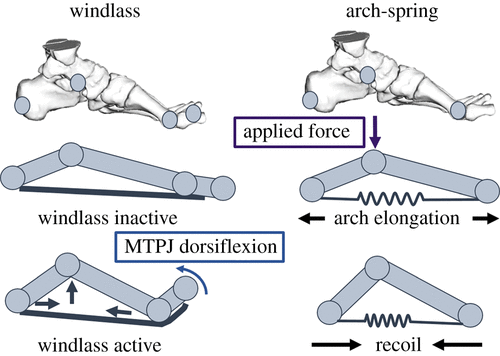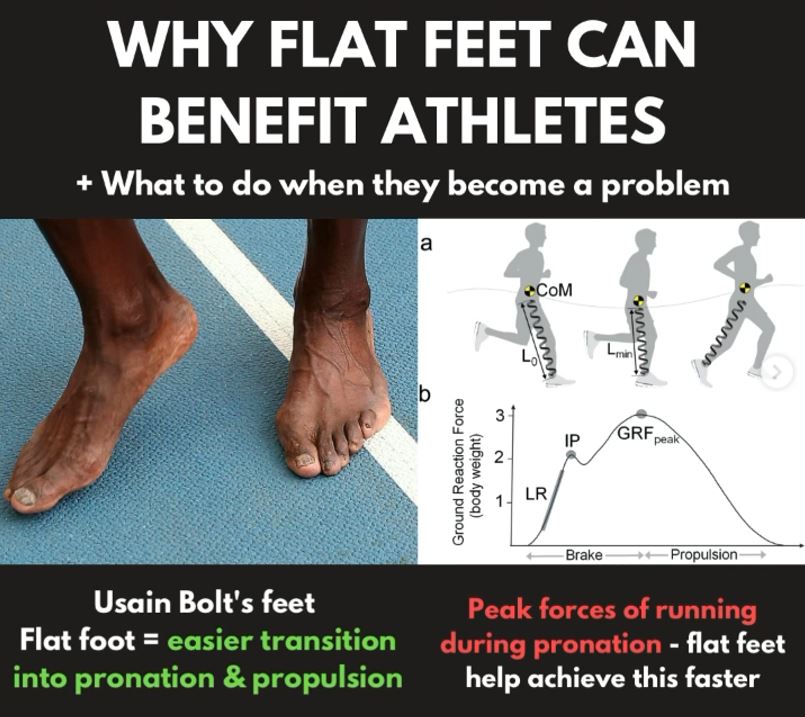How To Fix Flat Feet & Over-Pronated Arches - The Root Cause
Aug 29, 2022
If you're looking into how to fix flat feet, overly-pronated feet, or collapsed arches, this article is exacly what you're looking for.
Pronated feet are often seen as "undesirable" to have in terms of posture or foot presentations.
In many cases, flat feet are only the symptom of other more significant limitations in the body that should be addressed. However, it may also not even be a problem. Lots of people have what some would consider “excessive pronation”, but never have pain related to that orientation. It can cause problems if left unchecked, especially if it is a result of (or causing) compensatory positioning up the chain, potentially all the way to the neck.
I will address the following:
- How pronated feet can develop
- Implications of pronated feet
- What we can do about it
Pronated Feet Mechanics
When I see someone who has a "flat" foot, I know that this is likely driven by a few things:
- Genetics of foot structure
- Their degree of physical activity and what types they do most
- Shoewear
- Joint mechanics and range of motion available throughout the rest of the body
All of these, except for the first, are under our control. I do believe genetics can play a significant role in this, but I'm going to focus on what factors we have influence over.
To understand how pronated feet develop, let's first appreciate the mechanics of foot pronation itself quickly:
When we walk, run, jump, cut, or do just about anything dynamic, we need the foot to interact with the ground to create movement up the chain into our hips (pelvis), and subsequently, our upper body is going to respond to that lower body movement.
Let’s break down foot movement in normal gait mechanics. When we strike the ground with our heel, the foot is biased towards supination, which requires external rotation up the chain into our leg and pelvis.

Upon loading all of our weight onto the foot, we are quickly moving into internal rotation (from a position of relative external rotation) of the pelvis and leg, meaning the foot has to pronate (the arch drops).

Now, here’s where things get interesting. The foot has to be able to pronate for the shin to translate over the foot (dorsiflexion). This means that you cannot sperate pronation from dorsiflexion. These are two inherently coupled joint actions.

The pronation allows the foot to drop which allows for the muscles on the bottom-side of the foot to stretch out. The overwhelming majority of muscles that attach on the bottom of the foot are supination muscles, meaning that the stretch on those muscles sets us up to “re-spring” the arch upon push-off (late-stance). This is referred to as the Windlass Mechanism:

Now we have a situation where the ankle is biased towards re-supination, meaning external rotation up the chain.
Proper pronation will help set up a proper push-off (force production) via proper internal rotation.
The point is, we need to couple internal rotation with pronation. Almost every single time I see someone with collapsed feet or pronated arches, they are missing some degree of internal rotation and the hip and/or the tibia.
This "over-collapsing" of the foot arch is likely a strategy for them to find an internal rotation compensatory strategy.
There are a few different ways for someone to find missing internal rotation, but most commonly, the individual will move into more anterior pelvic tilt (extension), which pushes the center of mass forward, and results in more weight being pushed onto the midfoot.
The most common presentation I see here is where the femur is biased towards internal rotation due to the anterior pelvic tilt, but the tibia is biased towards external rotation and there is a clear "offset" between the upper knee (femur) and lower knee (tibia):
But we need to keep the foot underneath the hip still, so the only way they can do that is if the tibia literally bends (yes, bones can and do twist to an extent), which results in the further part of the tibia bent inwards and puts a lot of pressure on the midfoot to push the arch down:
Keep in mind that these are pretty significant circumstances in the examples above so that you can understand visually what I'm describing. The degree of "twist" is a gradient, and some people have more and some have a less obvious twist.
Regardless, the resultant flat foot is not achieving "relative motion" of genuine pronation as described above. This is "orientation" of the entire foot down as a whole unit.
Implications of pronated feet - are they a problem?
At this point you may be wondering, "So how do I know if mine are a problem?"
The simple answer is, "If you're not in pain or don't have any noticeable joint or range of motion restrictions affecting what you want to do on a daily basis or for your sport, don't worry about it."
Unless there are egregious red flags in movement quality, I and usually not overly concerned with flat feet. In fact, they can actually be helpful for some people:
Many athletes present with flat feet because it allows them to enter mid-stance easier when moving at high speeds.
This allows them to put force into the ground quickly. See my post below for more information on this:
If you do have issues, then we can consider a few things:
LaFortune et. al, 1994 found that the most common scenario was that the tibia was forced to internally rotate due to the valgus stress created by the pronated foot.
Interestingly enough, the femur rotated to the exact same degree so that no net rotation occurred between the femur and tibia. Instead, all the motion induced at the foot traveled through the knee and was absorbed by the hip.
A pronated foot that cannot go into supination effectively can stress the foot ligaments and also the plantar fascia (Bolga & Malone, 2004).
It can also cause the foot to try and find stability via causing the talus to move outward, stressing the subtalar joint.
This can result in a faulty gait pattern (ideal versus faulty due to pronation), which can cause bunions on the foot to build up (Golightly et. al, 2014).
How to fix pronated and flat feet
The key consideration here (and this is a hugely important concept) is that we are not using the visual presentation of your foot as the main determination as to whether we are having success fixing flat feet and associated problems.
Remember, flat feet are often a compensatory internal rotation strategy. If we improve internal rotation at the areas we need it, then the foot tends to have less of a reason to find a compensatory strategy.
There are a few steps we need to take, and below can give you some ideas. If you're looking for more in-depth information, progressions, and specifity to issues like this, check out my Lower Limb Foundations program.

If you are a coach, physcial therapist, or rehab practitioner, check out my updated Biomechanics Course which has a new week entirely on the foot and ankle where we address problems like this.
1. Determine the area of limited internal rotation
This can be at the hip and/or at the tibia. We can use hip internal rotation to determine if there is a limitation there. If you have less than ~25 degrees, this may be an issue.
And knee flexion is a measurement of tibial internal rotation. If you can't get your heel to your butt, this may be an issue:
2. Improve internal rotation and position of the pelvis
If you want to improve the resting position of the pelvis and/or internal rotation at the hip, here are a few good choices for individuals who have flat feet:
This next one works particuarly well for people with flat feet due to some more complex reasoning I discuss in my Biomechanics program:
For tibial internal rotation, these are great options:
In any case, you should be able to re-test your measurements and see/feel improvements if they are the right exercises for you.
3. Re-educate genuine foot pronation
Just because a foot is "pronated" or "flat" does not mean it can create genuine pronation. Recall that collapsed arches are a representation of a foot "oriented" into pronation rather than actually able to achieve the dissociation between the rearfoot and forefoot.
Once we improve our internal rotation, exercises such as these are ideal for improving foot pronation and learning how to pair hip and/or tibial internal rotation with dorsiflexion of the ankle and pronation of the foot:
4. (If needed) Choose appropriate shoewear
Those three steps should be enough to make significant progress for most people, but there are cases in which someone's shoewear is not ideal for their foot and is restricting their foot's ability fully pronate or supinate effectively.
Some people also have a situation where their foot needs the right reference for their foot in a shoe so it can learn to better move in and out of pronation. See this video for an in-depth discussion on that:
Don’t miss out on free education
Join our email list to receive exclusive content on how to feel & move better.






